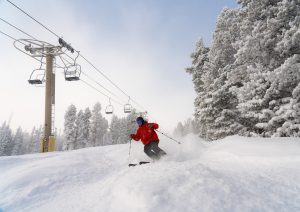Colorado Department of Transportation building connected roadways that use technology in cars, on roads

Chris Dillmann | cdillmann@vaildaily.com
VAIL — Colorado Department of Transportation is asking drivers to imagine 3 million cars generating 2 million data points every hour on roadways across the state.
At the Colorado Governor’s Tourism Conference in Vail on Wednesday, a luncheon session featured a discussion about CDOT’s Internet of the Roads project, currently underway, which uses technology to improve safety and mobility on the state’s roadways for both Coloradans and those who visit the state.
“At Colorado Department of Transportation, we feel we are facilitators,” said Wes Mauer, branch manager for CDOT’s Intelligent Transportation Systems. “Everyone starts with getting from Point A to Point B.”
Project details
CDOT’s project is the biggest of its kind in the United States, aspiring to connect roadways with emerging technology.
The goal is to create a real-time data center with technology in cars and at points across the roads.
With a 45 percent increase in fatal crashes in the past six years and 122 percent projected increase in traffic delays by 2040, CDOT is currently building an infrastructure that spans 1,500 miles in Colorado over the next three to five years, starting with a corridor that includes Vail. The cost of the technological infrastructure is the equivalent to building 5 miles of roadway, Maurer said.
“This allows the government to move much more rapidly and efficiently,” he added.
CDOT is already equipping its fleet of vehicles with the technology, a collection of thousands of vehicles. Panasonic works with car companies and is striving to get several million vehicles on the road by 2020 featuring the technology.
While CDOT is building this network for Colorado, the technology will be able to be shared and adapted to other locations.
It will be broken into two categories. The non-signalized corridors — high-speed, high-capacity interstates — will help with things such as showing road conditions and sharing crash notifications. The signalized corridors are more metro, city areas and the technology will have the ability to broadcast to vehicles when traffic lights are going to flip and help emergency vehicles navigate, among other things.
CDOT is preparing the technology for both human drivers and autonomous cars.
“In Colorado, everybody knows we have transportation challenges. One of the biggest ones I think most of us drove through to get here, which is Interstate 70, which connects people to the wilderness, hiking, skiing and other destination spots,” Maurer said.
Ross Leonhart can be reached at 970-748-2984 and rleonhart@vaildaily.com. Follow him on Instagram at colorado_livin_on_the_hill.

Support Local Journalism

Support Local Journalism
As a Summit Daily News reader, you make our work possible.
Summit Daily is embarking on a multiyear project to digitize its archives going back to 1989 and make them available to the public in partnership with the Colorado Historic Newspapers Collection. The full project is expected to cost about $165,000. All donations made in 2023 will go directly toward this project.
Every contribution, no matter the size, will make a difference.









